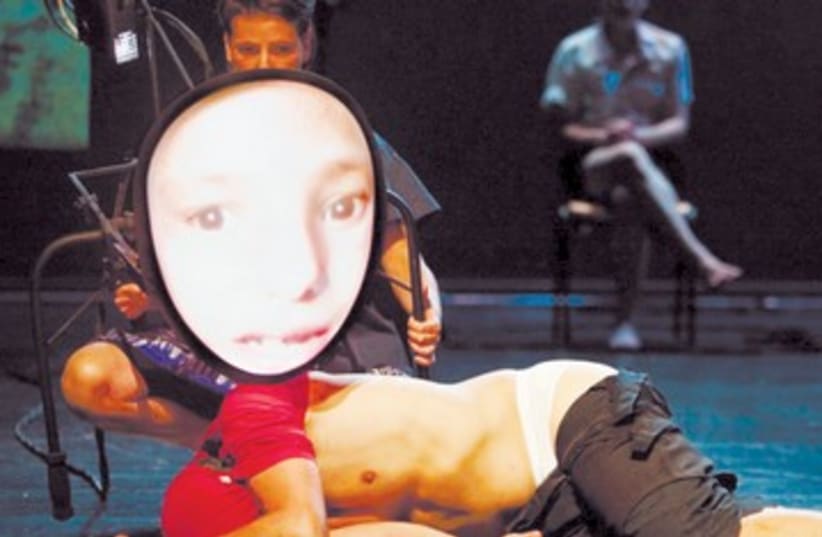“I’m interested in how these things affect the body. How does the body respond to all the media surrounding it?” He began by taking a room in the local community center. “I spent half a year in the neighborhood,” he says. “I lived there, basically.”Landau set out to get a feel for the people who inhabit Israel’s ‘hood.“For the performance, I edited over 70 hours of footage,” he explains. “I had a meeting with the commerce board, and they were shocked at how much I was able to uncover in my time there. I worked in an unconventional manner, which afforded me the opportunity to get to facts that were deep in the community. The act of documenting in an artistic way let me into a whole world of personal stories.”Landau then handed over his footage to choreographer Anat Danieli, who worked with the three dancers of the piece in the studio.“Anat met up with me after the filming. She saw the film for the first time in the studio, so she never met the people whose stories we are presenting,” he says.Also a part of the creative process was artist Jackie Shemesh, whose collaboration with Landau dates back to the beginning of the One Dimensional Man Project.“Jackie was a conceptual partner for this project. We sat and distilled the ideas together.”Once he had assembled enough edited footage, Landau invited the locals to a screening.“It’s a social project. The vision of the project was to film everything in the neighborhood.Then we had a performance there; I didn’t want to take it out of the neighborhood. I wanted to give to the place as well.”The Israeli premiere of this work marks the second phase of Landau’s plan. “I see there being three rings to this project,” he explains. “The first was to show it in Jesse Cohen; the second is to present it to Israeli audiences around the country; and the third is to offer it to international audiences.”Though he used documentary film techniques to create this work, Landau feels that the piece strikes a chord far beyond preservation.“It’s far beyond documentation,” he says. “It’s much more than a story of a ’hood. In this show, the dancers aren’t under the masks all the time. They are both behind the mask and responding to it. The images create a sense of connection and emotion in the dancers. The contrast between their connection to the filmed characters and their separation from them is pivotal in this work,” he says.Reside 1.1: Jesse Cohen will be performed on February 27 at 9 p.m. at the Suzanne Dellal Center. For tickets, visit www.suzannedellal.org.il.
For more information about the project, visit www.contemporaryperformance.org.
